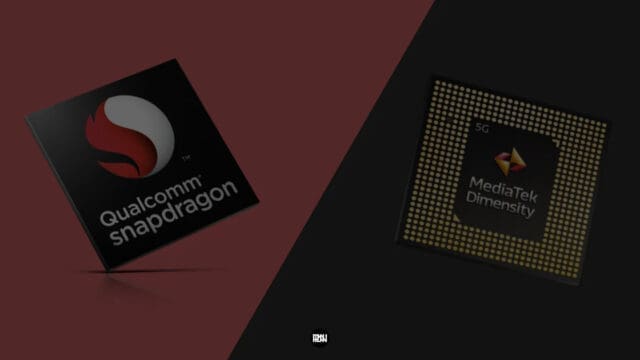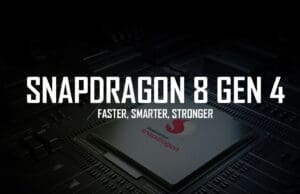Qualcomm’s Snapdragon 8 Gen 3 and MediaTek’s Dimensity 9300 are set to power flagship phones in 2024. This article provides an unbiased comparison of their specifications, benchmarks, and stress testing, offering valuable insights for tech enthusiasts.
Qualcomm introduced the Snapdragon 8 Gen 3 chipset in October 2023, while MediaTek unveiled the Dimensity 9300 in November. With both chipsets anticipating usage in flagship devices in 2024, the competition between the two is gaining momentum. This article analyzes their CPU configurations, GPU capabilities, benchmark performances, and stress testing results to determine which chipset emerges as the superior choice.
Specifications
Both chipsets share common features such as a TSMC 4nm process, Bluetooth 5.4, and support for hardware-based ray tracing. However, Qualcomm adopts a 1+5+2 CPU layout, emphasizing a higher clock speed and newer CPU cores. In contrast, MediaTek takes an aggressive approach with the Dimensity 9300, opting for four Cortex-X4 CPU cores and four medium Cortex-A720 cores.
| Specification | Snapdragon 8 Gen 3 | Dimensity 9300 |
|---|---|---|
| CPU Config | 1x 3.3GHz (Cortex-X4) | 1x 3.25GHz (Cortex-X4) |
| 3x 3.2GHz (Cortex-A720) | 3x 2.85GHz (Cortex-X4) | |
| 2x 3GHz (Cortex-A720) | 4x 2GHz (Cortex-A720) | |
| 2x 2.3GHz (Cortex-A520 Refresh) | ||
| GPU | Adreno | Arm Immortalis-G720 MC12 |
| Ray tracing support | Ray tracing support | |
| Global illumination | Global illumination | |
| DSP | Hexagon | APU 790 |
| (fused scalar, tensor, and vector) | ||
| Mixed precision INT8/INT16 | INT8/INT16 | |
| INT4 support | INT4 support | |
| RAM support | LPDDR5X | LPDDR5T |
| Camera | • 200MP single shot | • 320MP single shot |
| • 108MP single with zero shutter lag | • HDR video | |
| • 64MP+36MP with zero shutter lag | • Real-time semantic segmentation for photos and videos (up to 16 layers) | |
| • Triple 36MP with zero shutter lag | • 8K/30fps | |
| • Dolby HDR photo | • 4K/60fps | |
| • Real-time semantic segmentation for photos and videos (up to 12 layers) | ||
| • 8K/30fps HDR video | ||
| • 4K/120fps slow-motion | ||
| Charging | Quick Charge 5 | USB-PD PPS |
| 4G/5G Modem | X75 LTE/5G (integrated) | LTE/5G (integrated) |
| 10,000Mbps down | 7,000Mbps down | |
| 3,500Mbps up | ||
| Other networking | Bluetooth 5.4 | Bluetooth 5.4 |
| Wi-Fi 7, Wi-Fi 6/6E (802.11ax), Wi-Fi 5 (802.11ac), 802.11a/b/g/n | Wi-Fi 7, Wi-Fi 6/6E (802.11ax), Wi-Fi 5 (802.11ac), 802.11a/b/g/n | |
| Process | TSMC 4nm (N4P) | TSMC 4nm (4nm+) |
Benchmark Performances
The REDMAGIC 9 Pro, equipped with the Snapdragon 8 Gen 3, holds a slight lead in single-core scores, while the Vivo X100 Pro, featuring the Dimensity 9300, secures a closely contested win in multi-core performance. The competitiveness of the results suggests variability when applied to devices from other manufacturers.
Despite expectations for MediaTek’s Dimensity 9300 to dominate in multi-core tests with its four Cortex-X4 cores, the reality reveals that only one of these cores operates above 3GHz (3.25GHz), with the remaining three peaking at 2.85GHz. Qualcomm’s strategic enhancement of cache and increased clock speeds on six cores narrows the gap, resulting in the Dimensity 9300 surpassing the Snapdragon chip by a marginal margin.
In terms of CPU performance for app workloads, both the Snapdragon 8 Gen 3 and Dimensity 9300 exhibit a remarkably balanced performance.
However, GPU testing conducted through 3DMark exhibits a significant victory for the Snapdragon 8 Gen 3. The one-off Wild Life test showcases an impressive ~26% advantage for the REDMAGIC phone powered by Snapdragon. While the Dimensity 9300 outperforms the iPhone 15 Pro and the Galaxy S23 Ultra, there remains a notable disparity when compared to the Snapdragon 8 Gen 3 handset.
The Solar Bay ray tracing test further emphasizes Qualcomm and REDMAGIC’s dominance, revealing an almost ~21% advantage. This marks a turnaround from earlier benchmarks where the Dimensity 9200 excelled in ray tracing. The Snapdragon 8 Gen 2 closed the gap in subsequent tests, but advancements, coupled with a more potent GPU and optimizations, contribute to the substantial success observed. Despite the limited adoption of ray tracing in mobile games, the combination of enhanced GPU capabilities and optimizations proves advantageous for Qualcomm and REDMAGIC.
Stress Testing
In the Wild Life stress test, the REDMAGIC 9 Pro exhibits strong performance with the cooling fan enabled in performance mode. However, without active cooling, there are noticeable fluctuations before achieving consistent performance from the fifth run onwards, representing a significant 67% drop in stability, even below peak Snapdragon 8 Gen 2 and Dimensity 9200 scores.
In contrast, the vivo X100 Pro and Dimensity 9300 demonstrate greater instability throughout the test, maintaining only 44% stability by the end. Notably, the older Snapdragon 8 Gen 2 in the Galaxy S23 Ultra outperforms the Dimensity handset, with the Dimensity 9200-equipped vivo X90 Pro closely trailing its successor.
The Wild Life Extreme stress test intensifies the challenge, causing the REDMAGIC phone to drop 30% in performance from the first to the second run but maintains stability throughout. The Dimensity 9300 experiences a gradual drop in performance, dependent on cooling and workload levels. The vivo X100 Pro initially trails the Snapdragon 8 Gen 3 but takes the lead, holding it until run seven, suggesting potential resilience in real gaming scenarios. However, the Dimensity 9300’s stability falls to an abysmal 48.2%, placing it below the Dimensity 9200 and Snapdragon 8 Gen 2’s final scores.

In the Solar Bay ray tracing stress test, the MediaTek chip records poor performance with just 47.4% stability, trailing behind the Snapdragon 8 Gen 2 and Apple A17 Pro. Interestingly, the Dimensity 9200 surpasses its successor.
The Snapdragon 8 Gen 3 in the REDMAGIC 9 Pro experiences a notable drop in performance initially but stabilizes to outperform rivals. Activation of the cooling fan results in rock-solid performance until run 17, when a substantial ~62% decline occurs, culminating in a ~75% overall drop. Despite being a gaming phone, conventional Snapdragon 8 Gen 3 phones may face significant drops in peak benchmark scores due to cooling limitations. The MediaTek Dimensity 9300 emerges as a clear underperformer in stress testing, while the Snapdragon 8 Gen 3 is not without its challenges.
Conclusion
In terms of CPU performance, Qualcomm and MediaTek’s new chips are closely matched, excelling in single-core and multi-core benchmarks. However, the Snapdragon 8 Gen 3 outshines the Dimensity 9300 in GPU tests, establishing itself as the leader.
Stress testing reveals a significant disparity, as the Dimensity 9300-equipped vivo X100 Pro lags even behind previous-generation silicon. In contrast, the Snapdragon-powered REDMAGIC 9 Pro demonstrates a clear advantage over older chipsets and the latest offerings from Apple and MediaTek, despite not providing an entirely stable experience.

While it’s premature to assert that all Snapdragon 8 Gen 3 phones will surpass Dimensity 9300 handsets, it’s essential to note that the REDMAGIC handset, designed for gaming, incorporates passive cooling measures and a performance mode cooling fan. Results may vary with upcoming phones like the Galaxy S24 series. It’s plausible that the cooling solutions of the vivo X100 Pro are inadequate, potentially contributing to performance issues observed in earlier models like the X90 Pro. Despite this, the Dimensity 9300’s debut disappoints in handling intensive GPU workloads.
Nevertheless, the X100 Pro remains an attractive premium flagship, offering versatility and ticking numerous boxes. Individuals prioritizing performance and gaming, however, should consider Snapdragon 8 Gen 3 phones like the REDMAGIC 9 Pro. While Dimensity 9300 phones provide respectable performance and a good gaming experience, Snapdragon 8 Gen 3 devices are likely to better handle future demanding titles.

























